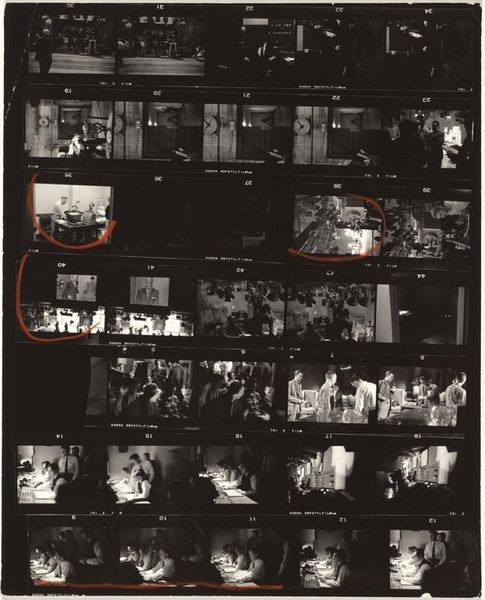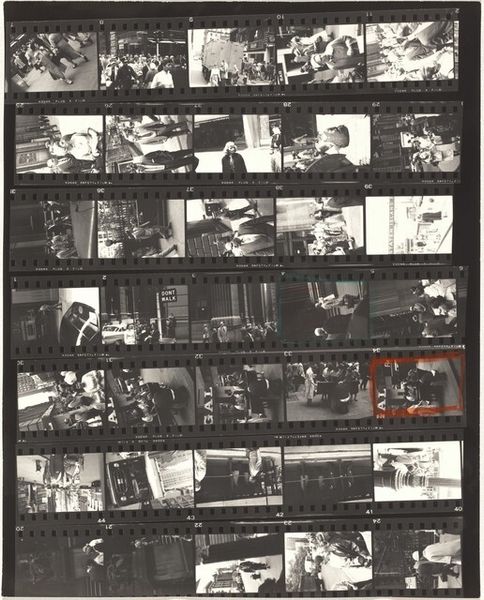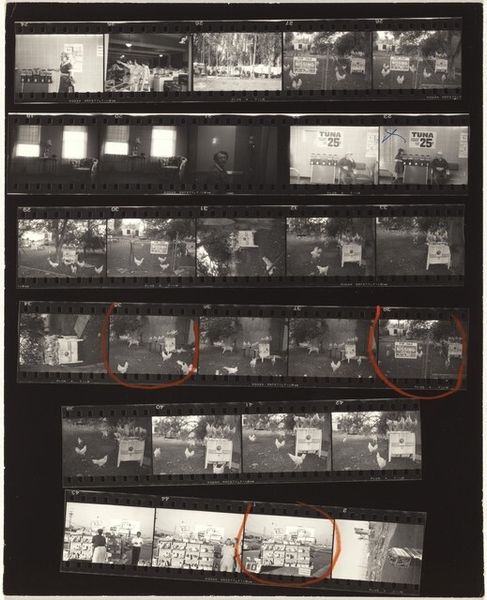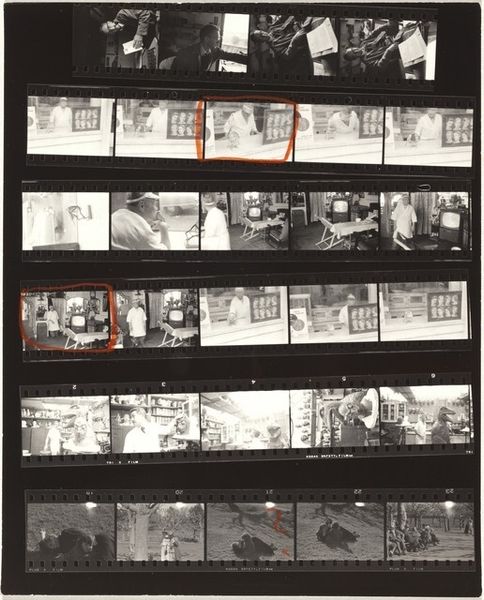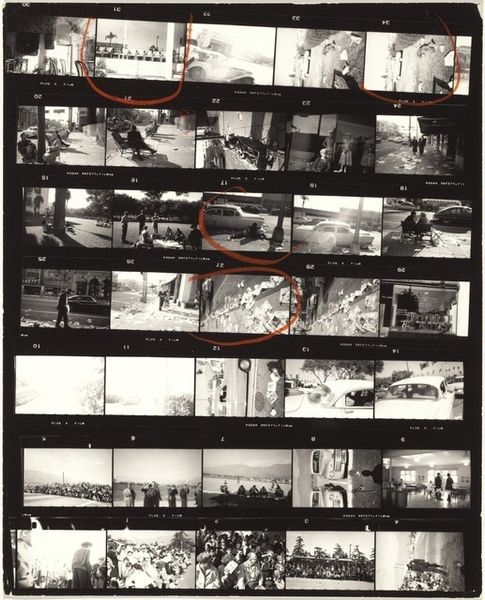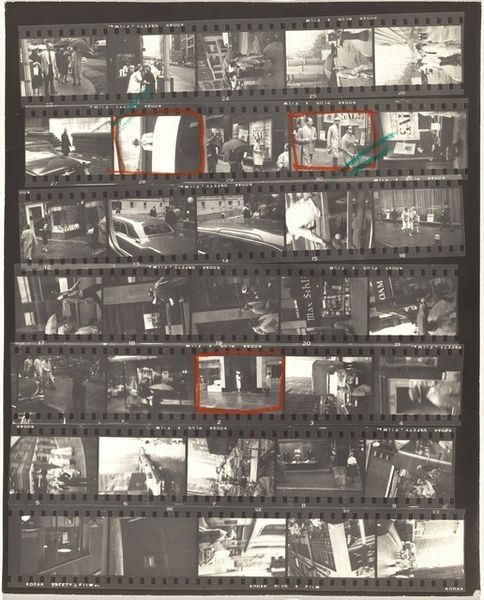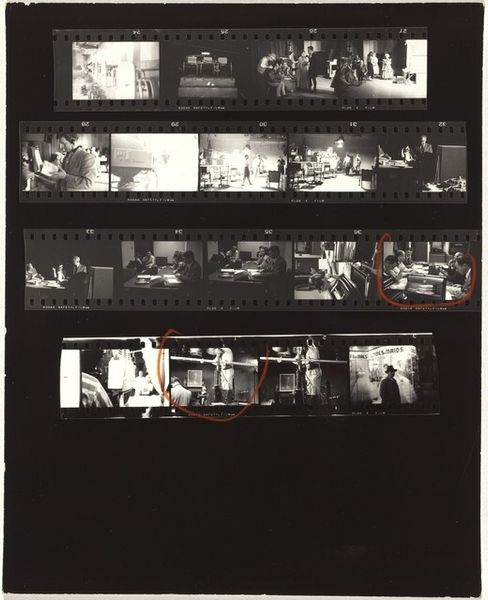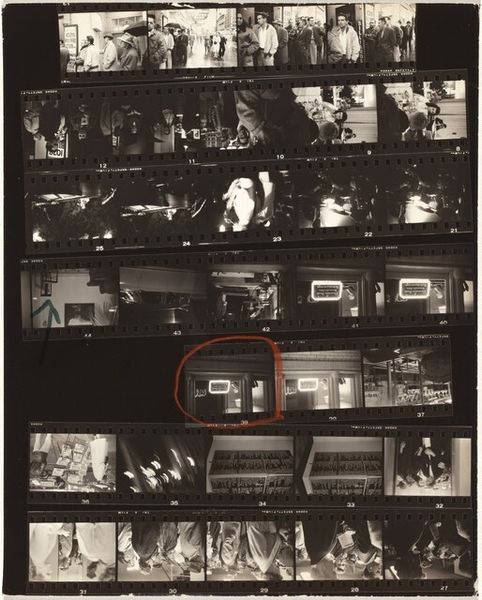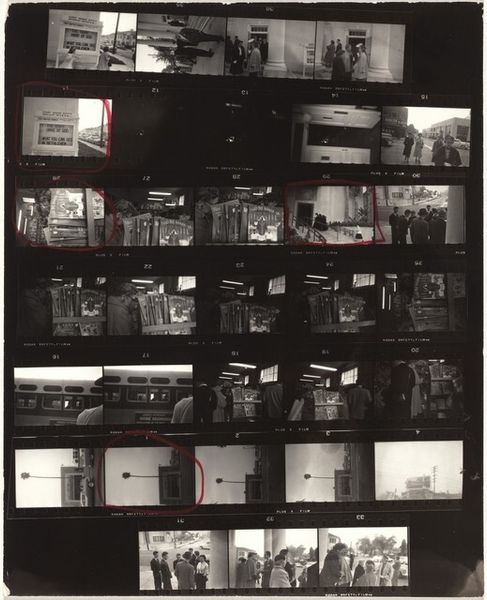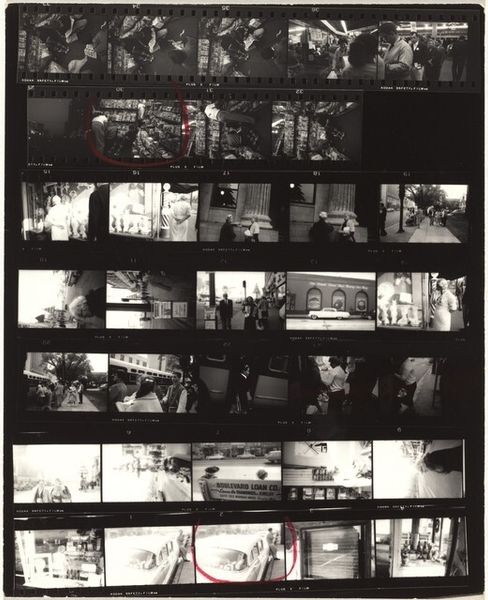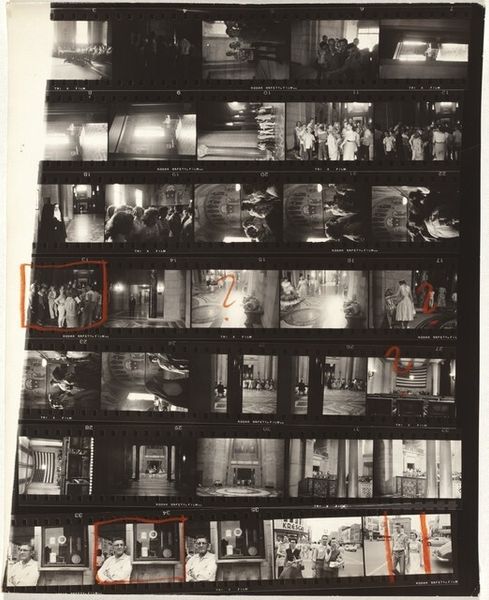
Guggenheim 494--Twentieth Century Fox film studio, Burbank, California 1956
0:00
0:00
contact-print, photography
#
portrait
#
dark object
#
dark design
#
dark hue
#
contact-print
#
street-photography
#
dark monochromatic
#
photography
#
dark-toned
#
dark environment
#
dark colour palette
#
dark focal point
#
dark mood
#
dark vibe
#
modernism
Dimensions: overall: 25.3 x 20.5 cm (9 15/16 x 8 1/16 in.)
Copyright: National Gallery of Art: CC0 1.0
Curator: This contact sheet, created by Robert Frank in 1956, offers a glimpse behind the scenes at Twentieth Century Fox film studio in Burbank, California. What strikes you about it? Editor: It feels almost voyeuristic, doesn't it? Like we're granted forbidden access. The stark contrast and slightly blurred quality gives it a grainy, intimate feel. It is like uncovering lost footage, discarded fragments, or evidence. Curator: Exactly! The contact sheet format is significant. It lays bare Frank's working method, exposing not just the final selection, but the outtakes, the near misses. It challenges the romantic notion of the decisive moment by showing us the messy reality of photographic production. We witness his choices, what he framed, what he rejected. Editor: And think of what the materials represent: celluloid film, a product manufactured for mass consumption, yet capable of producing art, recording culture, or shaping opinion. I'm curious about the labor involved—the film processing, the printing, Frank's eye selecting these particular shots…what stories can these snippets tell? Curator: The composition invites such close readings. The studio is part of the Dream Factory of Hollywood, after all. To present it this way invites a questioning of authenticity. Does photography simply reproduce the existing cultural machine? The image raises some tough questions about representation and power, not just within the studio but about who gets to tell whose stories. Editor: And whose stories are these, really? They could be fragments from the daily lives of studio employees or fabricated movie sets, reflecting societal projections of wealth, beauty and ambition, repackaged. Curator: Absolutely, it prompts us to consider the institutional forces shaping art and imagery. The Hollywood studio as a powerful cultural institution. By making it visible, in a sense, Frank is denaturalizing the images we so readily consume. Editor: Well, for me, this piece unveils layers. The physicality of the contact sheet. The artistic choices. It makes me ponder on image construction itself and the cultural role of cinema. I now feel I could explore each cell of the sheet. Curator: Indeed, it highlights both the potential of photographic language and its manipulation by corporate power, inviting viewers to become critical observers, decoding the dark mood of Hollywood. A moment captured in time to open many avenues of thought.
Comments
No comments
Be the first to comment and join the conversation on the ultimate creative platform.
